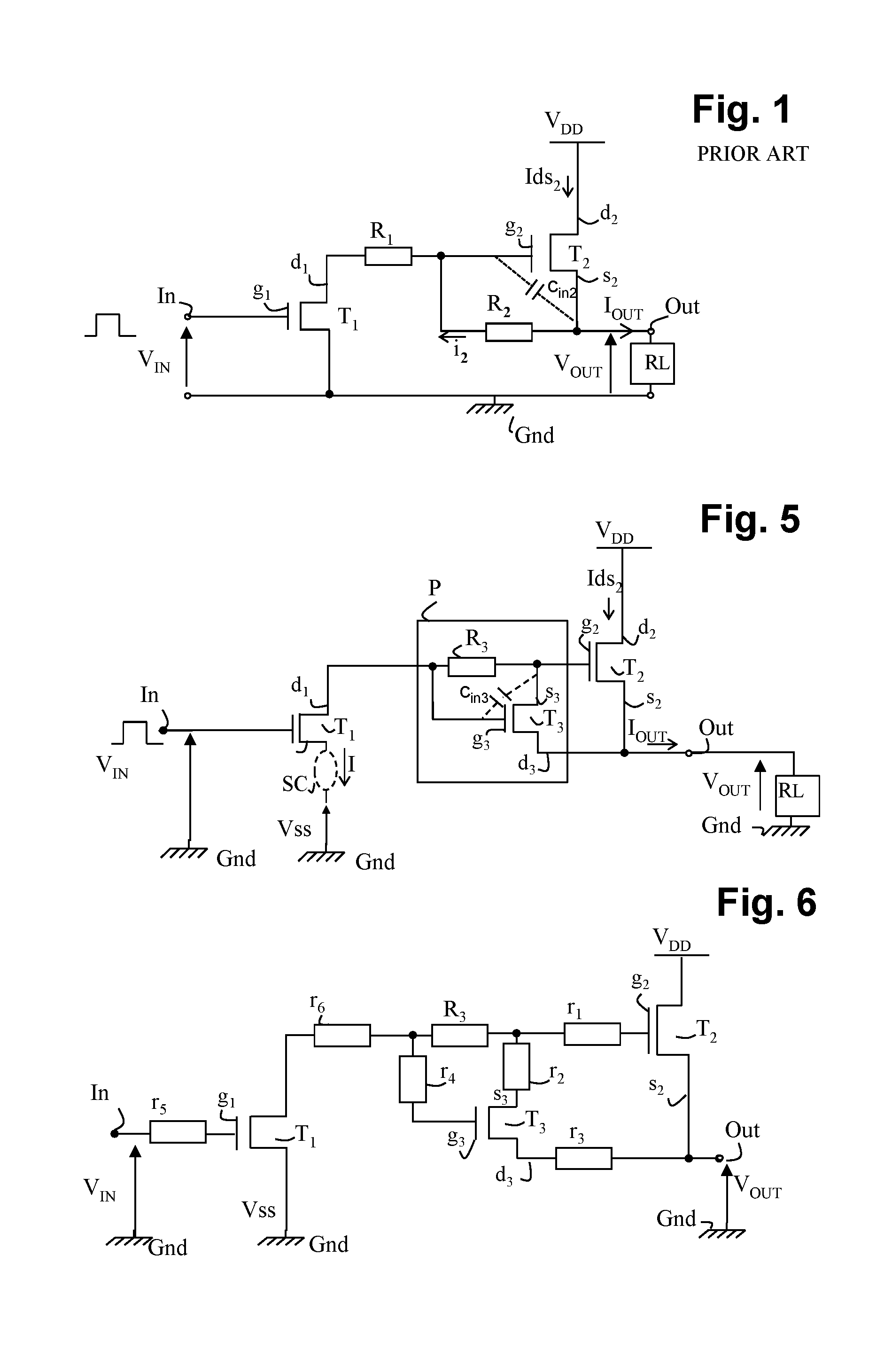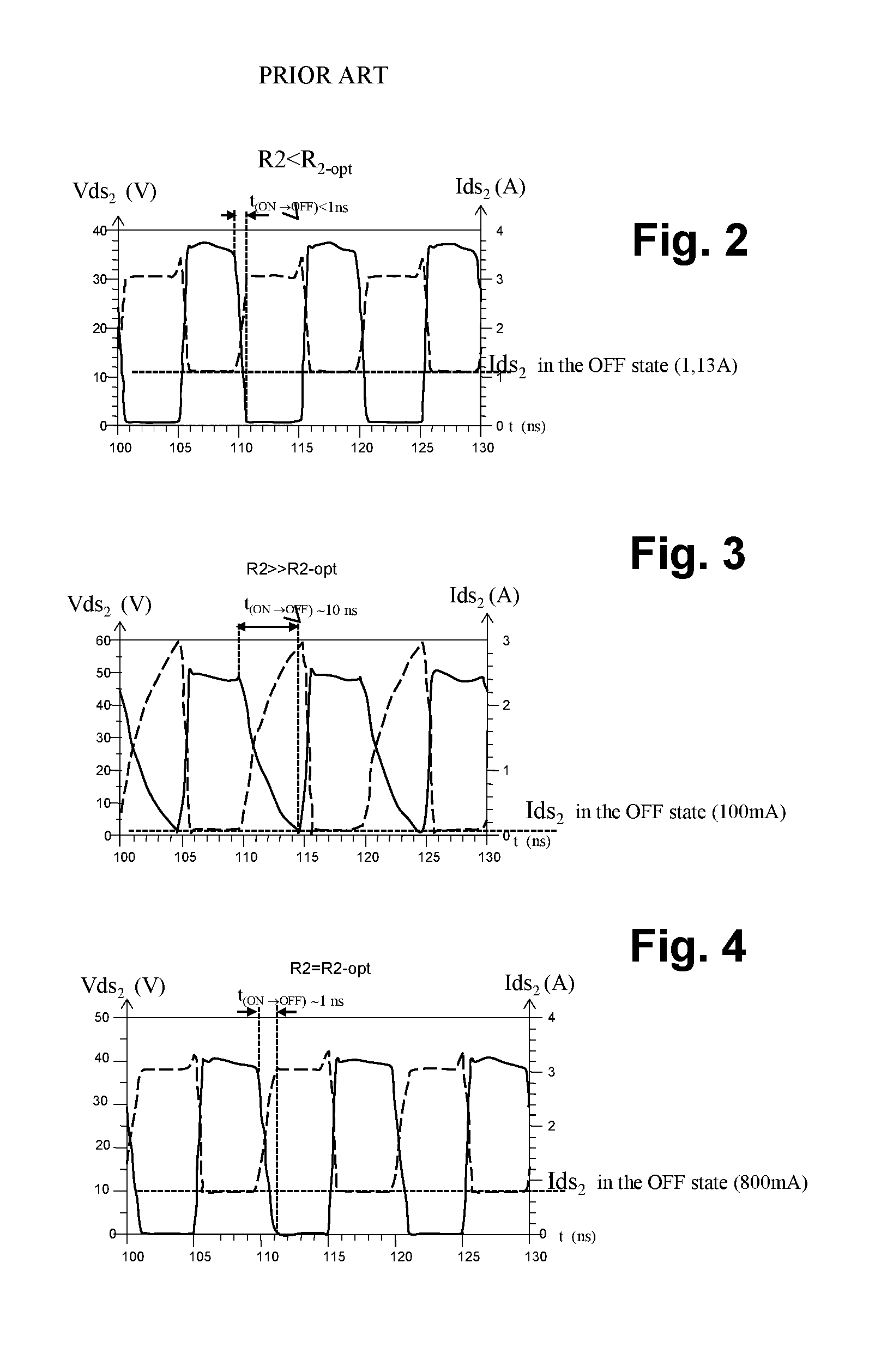Power switching cell with normally conducting field-effect transistors
a field-effect transistor and power switching technology, applied in the field of power switching, can solve the problems of increased switching time t, reduced current ids/sub>2, increased electrical losses in the off state, etc., and achieves the effect of simplifying control logic and improving switching speed
- Summary
- Abstract
- Description
- Claims
- Application Information
AI Technical Summary
Benefits of technology
Problems solved by technology
Method used
Image
Examples
Embodiment Construction
[0082]A basic structure of a cell according to the invention is illustrated in FIG. 5. For the sake of simplicity, the elements common to the cell of the prior art that is illustrated in FIGS. 1 to 4 and to the cell of the invention illustrated in FIGS. 5 to 13 bear the same references. The self-biasing and power transistors of the cell are normally on (ON state) field-effect transistors, even if this is not necessarily specified for the purpose of not overburdening the disclosure.
[0083]The basic structure of a cell according to the invention illustrated in FIG. 5 shares the current switch formed by the input transistor T1 and the power transistor T2 that switches the high voltage Vdd with the cell of the prior art illustrated in FIG. 1.
[0084]The self-biasing resistor R2 for biasing the gate of the power transistor of the cell of FIG. 1 is replaced, in the cell according to the invention, by a self-biasing circuit P for biasing the gate comprising:
[0085]a transistor T3 that is a nor...
PUM
 Login to View More
Login to View More Abstract
Description
Claims
Application Information
 Login to View More
Login to View More - R&D
- Intellectual Property
- Life Sciences
- Materials
- Tech Scout
- Unparalleled Data Quality
- Higher Quality Content
- 60% Fewer Hallucinations
Browse by: Latest US Patents, China's latest patents, Technical Efficacy Thesaurus, Application Domain, Technology Topic, Popular Technical Reports.
© 2025 PatSnap. All rights reserved.Legal|Privacy policy|Modern Slavery Act Transparency Statement|Sitemap|About US| Contact US: help@patsnap.com



